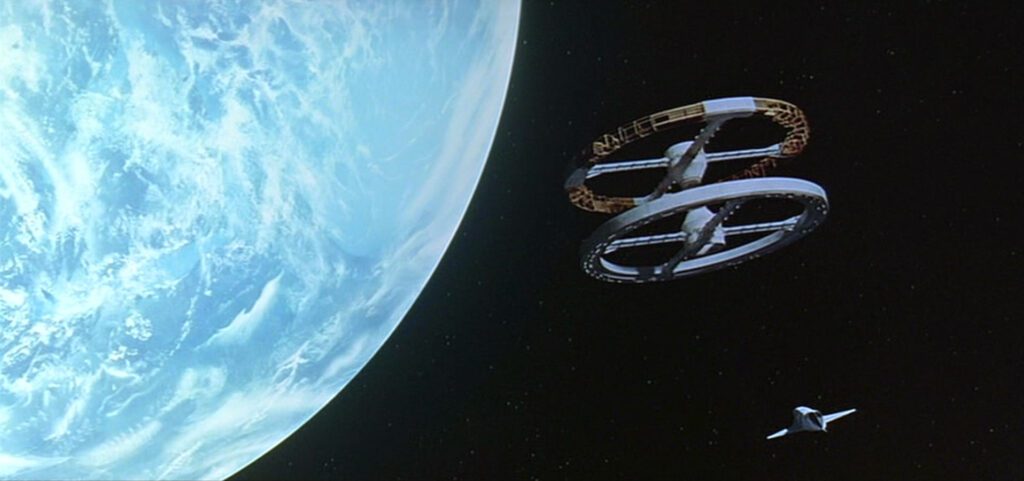
2001: A Space Odyssey
1968, directed by Stanley Kubrick
Given the sheer grandiosity of 2001: A Space Odyssey – its span of at least four million years, its reach across the solar system and beyond, and its mind-bending enigmas – it’s tempting to look in it for a big statement: a meditation on evolution? a prophecy for mankind? a revelation about technology? But let’s not rule out a more modest possibility. Could the vast scale of 2001 be a disguise for something more down-to-earth, like an old-fashioned lesson about life?
The opening “Dawn of Man” scene ends with the famous cut from a tapir’s leg bone to a spaceship between Earth and the Moon. Everyone understands in a flash, without a word of explanation, that this cut bridges millions of years, linking one of the earliest tools to a more sophisticated tool of similar shape, each spinning freely in the sky. One human milestone leads to another, and the primitive vigor of Also Sprach Zarathustra by Richard Strauss is replaced by the civilized precision of Johann Strauss’ Blue Danube Waltz.
But the bone is more than a tool. It has already served its purpose, killing animals for food and crushing the enemy tribe, and when the ape-man casts it into the air he is celebrating his victory. It’s a gesture of pure pride, and this – as much as the leap in technology – is what connects it to the spacecraft, which is also a mark of human pride.
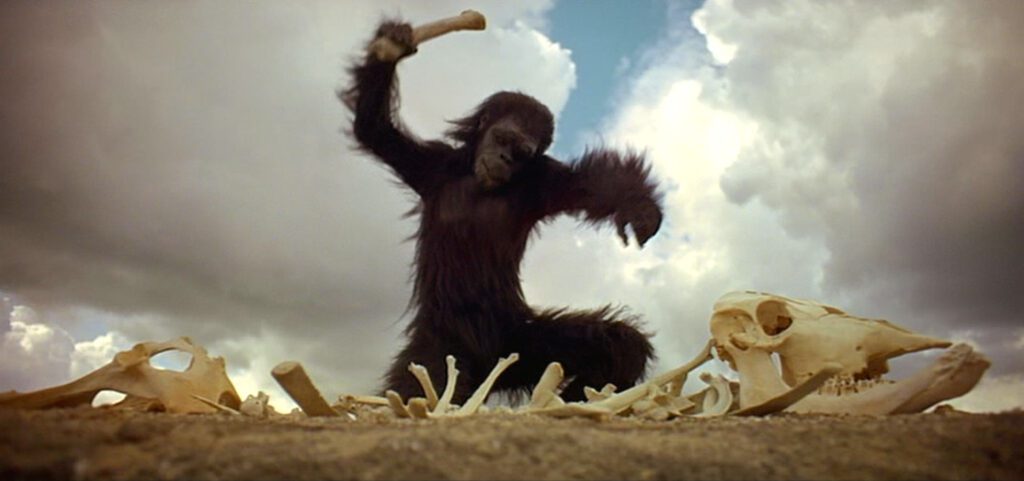
Pride, as it turns out, is the common denominator throughout 2001. The opening syzygy of the Moon and Sun is a visual correlative for pride, a rarely seen hierarchical alignment viewed from a privileged position, a “God’s eye view”. The vignettes of shaggy hominids overcoming predators and rivals augur a long history of human pride. Choreographed spaceships reflect the pride of a species that has begun to conquer the distances of outer space, and Dr. Heywood Floyd wears his professional pride all too conspicuously as he meets with the Russians and leads the conference on the Moon. When the astronauts approach the monolith, their initial wonder turns quickly to pride as they line up for a group portrait in front of it. The first thing we see inside the flight to Jupiter is astronaut Frank Poole shadow boxing as he jogs laps around the ship, a self-satisfied display of prowess. Jupiter itself is named for the proud king of the Roman gods, and Dave’s name derives from King David, another personification of pride.
Even minor “filler” details point to pride, like the judo contest on the shuttle television, the chess game on Discovery One, or the compliments between characters in the space station. In a movie with such sparse dialogue, it’s remarkable to find two birthday scenes that do so little to advance the plot. Heywood Floyd calls home for his daughter’s birthday, and Frank Poole receives birthday greetings from his parents. A birthday, of course, is a day of pride, the one day when almost anyone may expect to be the center of attention. Poole’s parents stress how proud they are of their astronaut son, telling him he’s become a celebrity back home. The whole blanket of secrecy surrounding the monolith on the moon is a big act of pride; it essentially says, “We can handle news of extraterrestrial life, but ordinary people need to be cushioned from it.”
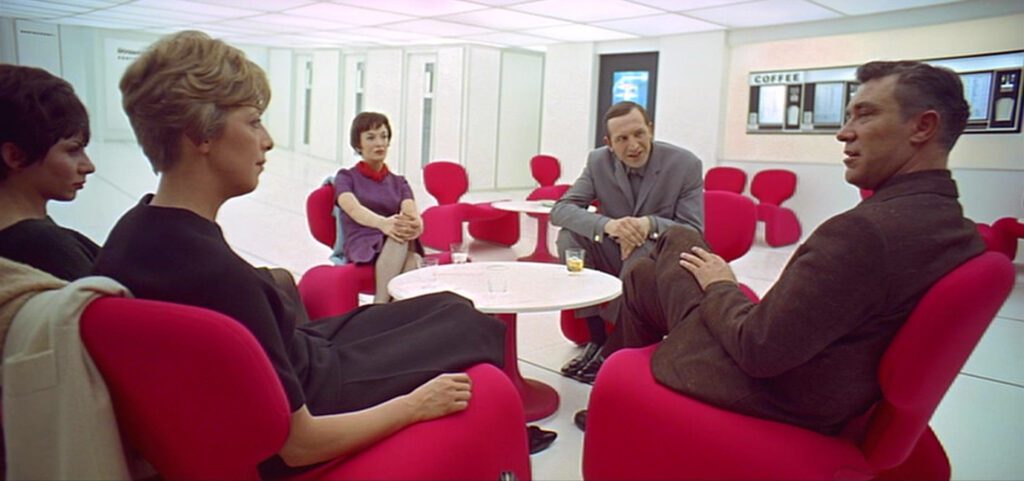
None of the above, however, rivals the monumental pride of HAL 9000, the computer guiding the voyage to Jupiter. Although HAL’s intelligence and personality distinguish it from the more flatly characterized humans who populate the movie, there is no escaping that HAL was fashioned in the image of its human creators. When the computer says, “No 9000 computer has ever made a mistake or distorted information. We are all, by any practical definition of the words, foolproof and incapable of error,” we can be sure that this exaggerated self-esteem reflects the programmers’ own pride.
All these signs of pride are concentrated in the first half of 2001. As soon as HAL and the Jupiter-bound astronauts are properly introduced to us, the movie turns to the predicted breakdown of the communications antenna, a seemingly mundane incident whose ultimate purpose in the plot is… what? To bring about the shutdown of HAL? That hardly helps us to understand the mysterious ending. What does help is to see where the movie had been leading in its first half, and to realize that its goal is to put Dave Bowman absolutely alone on the spaceship.
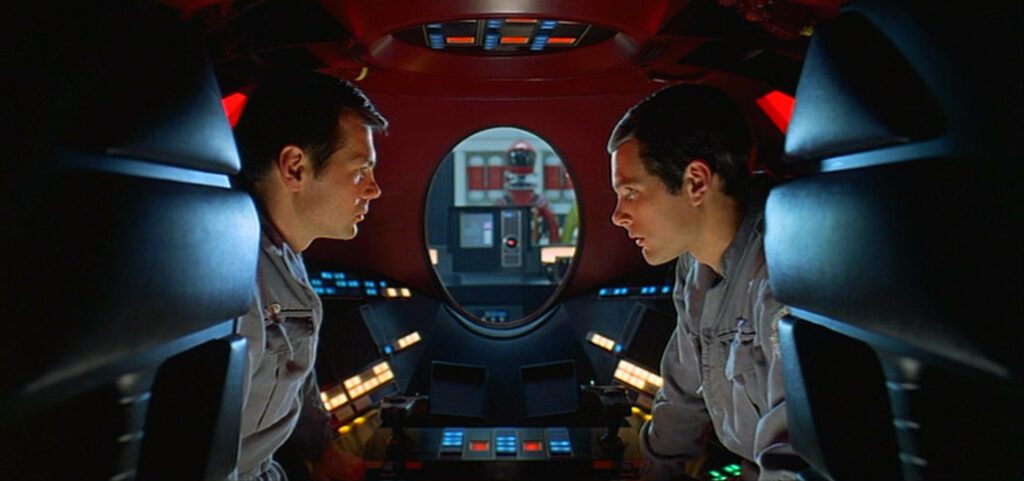
Once the other astronauts have been killed off and HAL deactivated, we find Dave in a historically unique situation – a human being not only completely separated from others, virtually alone in the universe, but also without even the possibility of encountering another person. Even the loneliest prisoner in history, totally at others’ mercy, would have had more hope of human contact than Dave has when Discovery One passes Jupiter. In other words, we have for the first time in history a man with absolutely no cause for pride. It would be meaningless in the absence of other people.
Everything that happens to Dave in the last part of 2001 can be understood in this framework. Instead of wagging its finger and calling pride a sin, the movie shows how the absence of pride creates a vacuum into which a more appropriate vision of life can enter, a vision we may call “wonder” – a totally conscious and self-effacing immersion in the reality of experience.
The wild nine-minute flight beyond Jupiter through morphing lights and colors is an outburst of wonder. Describing it as psychedelic or as a trip through hyperspace is not terribly helpful; more to the point, it represents Dave’s mounting awe toward the surrounding universe as his pride wanes away. The spectacle is served for the audience’s wonder as well, a novel visual experience where color, motion, and form are as fresh and unfamiliar as we might expect of a newborn infant’s perception.
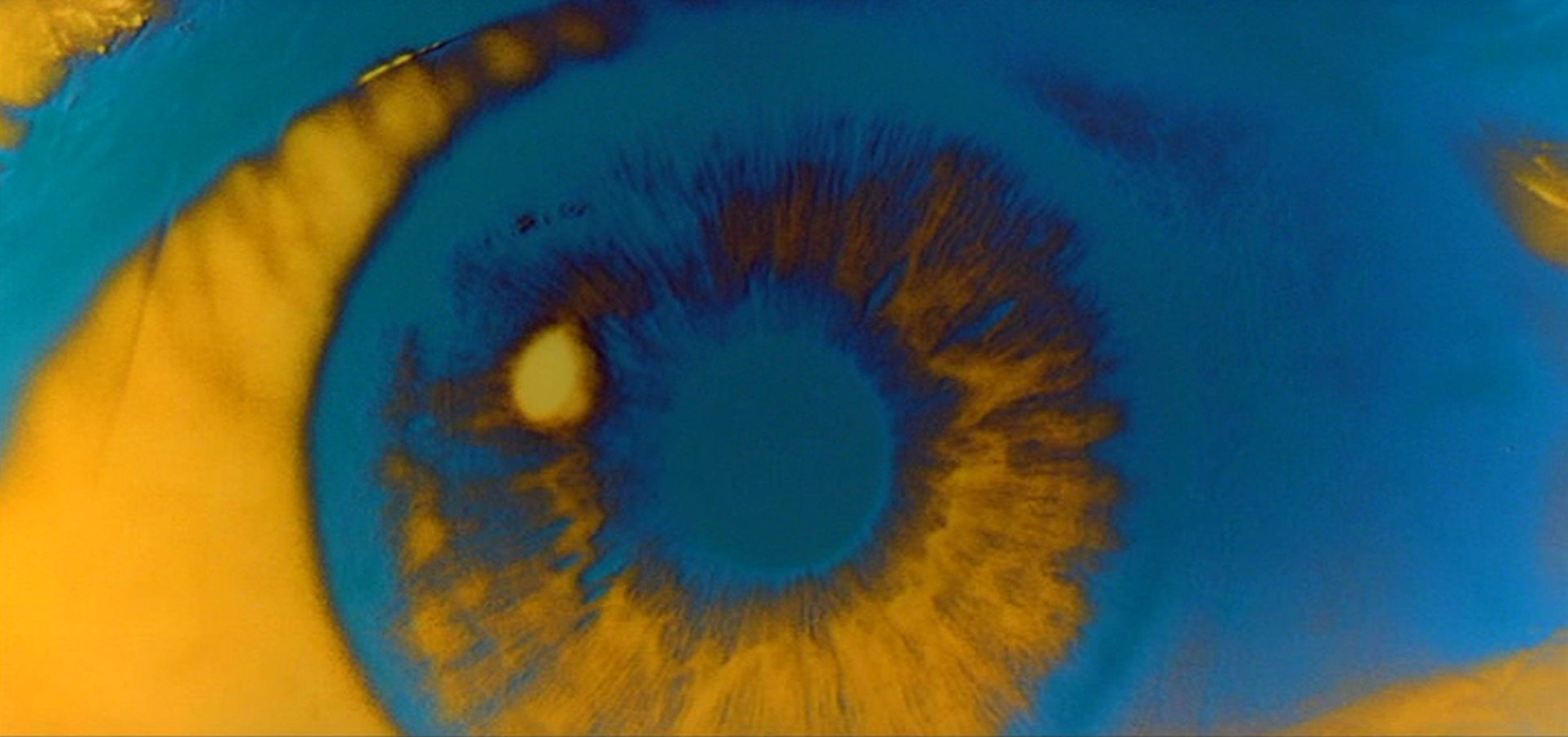
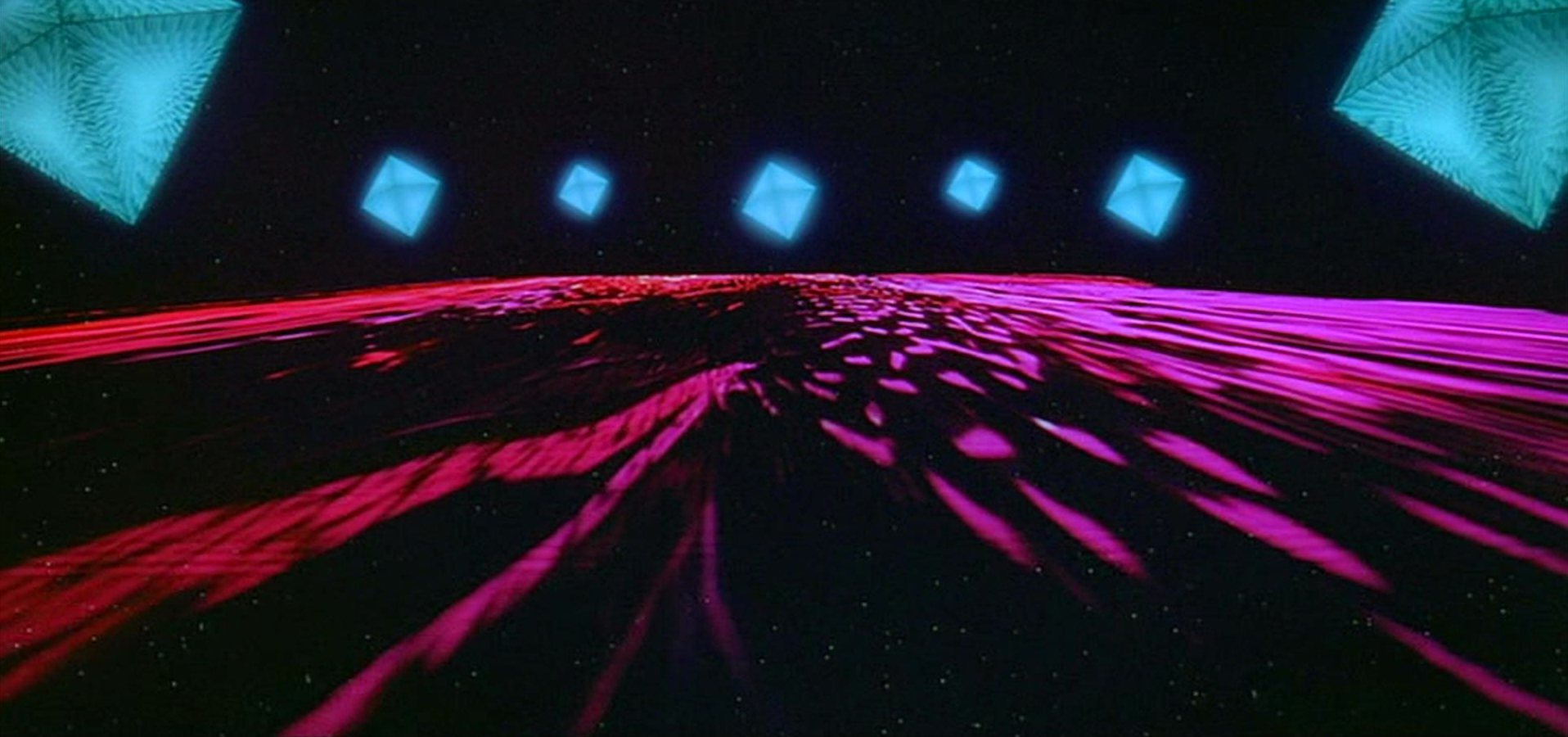
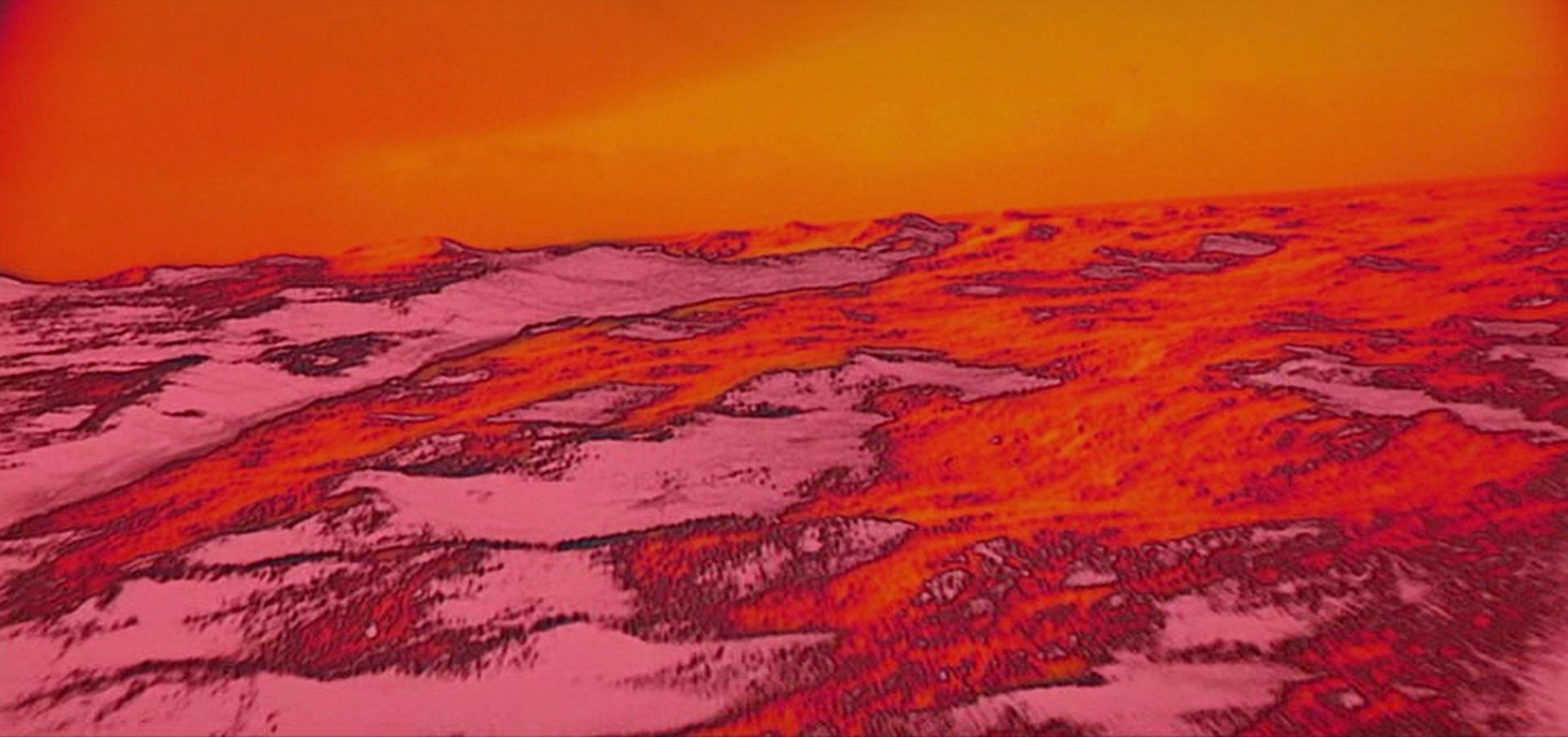
What follows, however, is more telling. Suddenly Dave finds himself at rest in a most unexpectedly domestic setting, a classically ornamented room like a windowless Park Avenue apartment with an illuminated floor and an unearthly ambient soundscape. In this dreamlike room Dave Bowman undergoes four transitions, each precipitated by a shock, the first three linked with something made of glass and the last with the mysterious monolith:
- The sight of the strange room through the porthole leads to a second Dave, standing in his spacesuit and facing the pod, which presently disappears;
- Upon seeing his wrinkled face in the bathroom mirror, the second Dave gives way to a third, a bathrobed elderly man dining alone at a small table;
- When the third Dave knocks a wine glass to the floor, the shattered crystal draws his eyes to a fourth Dave lying in his bed, more aged and infirm than the last;
- The monolith appears directly in front of his bed, replacing Dave’s skeletal body with a wide-eyed infant in a clear bubble.
Divorced from the context of pride, this final scene is utterly enigmatic, its meaning anyone’s guess. Seen, however, as a further comment on pride, it all becomes clear. In each of his four transitions, Dave symbolically steps outside of himself, shocked by a revelation that further humbles him. In the first he is shaken and disoriented by his voyage; in the second he sees himself wrinkled and aged; in the third he confronts his own infirmity; and finally, with the monolith, he sees how small his place in the universe is. If we wish, we could imagine that 2001 is the story of a rich old man who fantasizes himself as an astronaut, and how he arrives in stages at a wiser and humbler point of view.
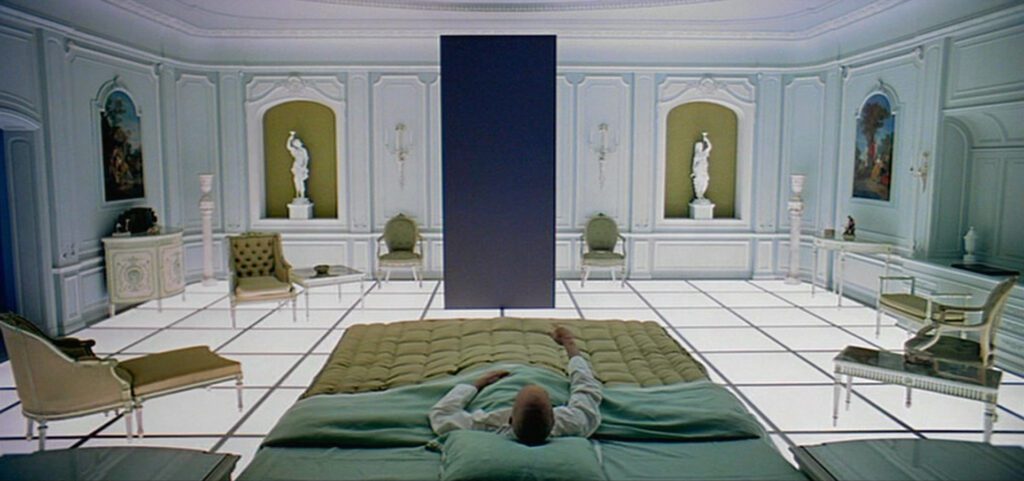
Mirroring the four transitions that structure the final scene, the monolith appears four times in 2001: in prehistoric Africa, on the Moon, floating around Jupiter, and in the apartment at the end. Each of the first three is accompanied by a syzygy, recalling the God’s eye view that opens the movie; but there is no syzygy with the fourth monolith. The infant views Earth from the side, below the Moon, not from a position of superiority. In its four appearances the monolith has charted an arc across a history of pride, from its inception at the dawn of man, to mankind’s technological triumph, to the release of pride’s bonds, and ultimately to the replacement of pride with wonder.
CONNECTIONS:
Meshes of the Afternoon – Multiple iterations of the same person in one room; abbreviated journey across evolution
Sunset Boulevard – Apes used as a symbolic marker of evolution
Pickpocket – Story of pride driving a man to isolation / Story of isolation releasing a man from pride
The Big City – Opening shot defines an ideological point of view (aspirational upward view, privileged view of a syzygy)
Solaris – Antidote to the hubris of technology and space travel
Baxter, Vera Baxter – Cut spanning centuries of history
When the Tenth Month Comes – Important cut from an object flying through the sky to another object with close parallels
Eyes Wide Shut – Gorillas and tigers in the toy store like hominids and leopard in Africa; words “thank you” at the one hour mark; birthday/holiday as a sign of pride/gratitude
The Martian – Man alone in space; choreographed spaceships with weightless passengers; mention of astronaut’s child’s birthday on Earth; protecting people from sensitive knowledge